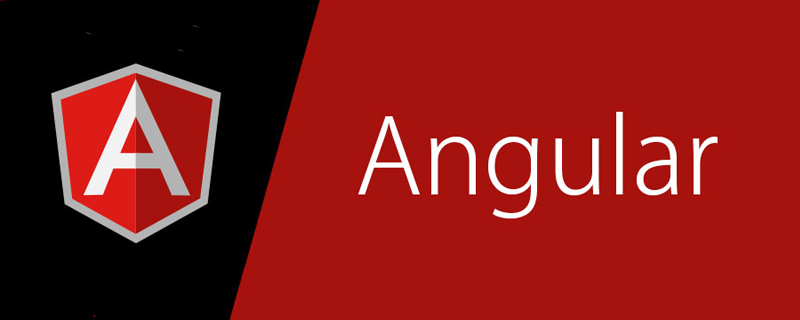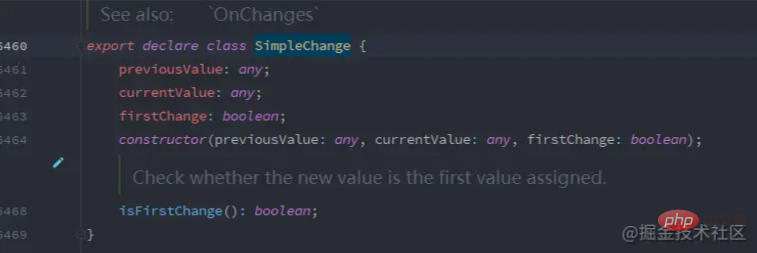
How to communicate between Angular components? The following article will introduce to you 5 methods of communication between Angular components. If necessary, you can refer to it~

Components are built by angular Unit, in order to ensure that data can be transferred back and forth between components in the project, Angular encapsulates some methods that can achieve communication between components. [Related tutorial recommendations: "angular tutorial"]
Parent component
parent.component.ts
age = 18; name = ' xiaoming '
parent.component.html
<app-child-1 [age]="age" [name]="name"></app-child-1>
Child component
child1.component.ts
@Input() age!: number;
Interception of changes in input attribute values
1. Use an input attribute setter to intercept the parent Changes in value in the component and take action.
child1.component.ts
@Input()
set name(name: string) {
this._name = name.trim();
}
private _name: string;2. Use the ngOnChanges() hook function to monitor changes in input attribute values and respond. This method is more appropriate than using property setters when multiple, interactive input properties need to be monitored.
child1.component.ts
ngOnChanges(changes: SimpleChanges): void {
console.log(changes);
}We can learn about the related properties of SimpleChange through the type description file officially provided by angular:


The child component exposes an EventEmitter (decorated with @Output (or) attribute. When an event occurs, the child component uses this attribute to emit the event to emit the value to the parent component. The parent component binds to this event property and responds when the event occurs.
Child component
child1.component.ts
@Output() voted = new EventEmitter<boolean>();
emitValue(): void {
this.voted.emit(true);
}child1.component.html
<button (click)="emitValue()">Click</button>
Parent component
parent.component.html
<app-child-1 [age]="age" [name]="name" (voted)="getChildParam($event)"></app-child-1>
parent.component.ts
getChildParam(value: boolean): void {
console.log(value); // true
}Child component
child1.component.ts
address = 'Shanghai';
setAddress(address: string): void {
this.address = address;
}Parent Component
parent.component.html
<app-child-1 [age]="age" [name]="name" (voted)="getChildParam($event)" #child1Component></app-child-1>
<div>{{child1Component.address}}</div>
<button (click)="child1Component.setAddress('Beijing')">Click</button>Limitations: Parent component-child component connections must all be made in the template of the parent component. If the class of the parent component needs to read the property value of the child component or call the method of the child component, it cannot use the local variable method.
When the class of the parent component needs to read the property value of the child component or call the method of the child component, it cannot use local variables. Method; if there is such a need, we can inject the child component into the parent component through @ViewChild;
parent component
parent.component.ts
@ViewChild(Child1Component) private child1Component!: Child1Component;
You can access the properties and methods of child components through the child1Component variable;
In order to achieve any For communication between components, we can combine the BehaviorSubject object in Rxjs to create a shared service; for the use of BehaviorSubject, please refer to this blogblog.tcs-y.com/2019/10/08/…
Create dataService.ts
import {BehaviorSubject} from 'rxjs';
import { Injectable} from '@angular/core';
@Injectable(
{providedIn: 'root'}
)
export class DataService {
data: BehaviorSubject<number> = new BehaviorSubject<number>(0);
}Inject the service in the constructor of component 1 and set data
child1.component.ts
constructor(private dataService: DataService) {}
// 设置data的值
changeData(): void {
this.dataService.data.next(10);
}child1.component. html
<button (click)="changeData()">Click</button>
Inject the service in the constructor of component 2 and subscribe to data
child2.component.ts
constructor(private dataService: DataService) {
this.dataService.data.subscribe(value => {
console.log(value); // 10
});
}For more programming-related knowledge, please visit: Introduction to programming! !
The above is the detailed content of A brief discussion on 5 methods of communication between Angular components. For more information, please follow other related articles on the PHP Chinese website!
 The difference between heap and stack
The difference between heap and stack
 How to open iso file
How to open iso file
 What system is qad?
What system is qad?
 What plug-ins are needed for vscode to run HTML?
What plug-ins are needed for vscode to run HTML?
 What is the difference between php7 and php8
What is the difference between php7 and php8
 CMD close port command
CMD close port command
 What are the calling methods of java reflection
What are the calling methods of java reflection
 How to solve the problem of 400 bad request when the web page displays
How to solve the problem of 400 bad request when the web page displays